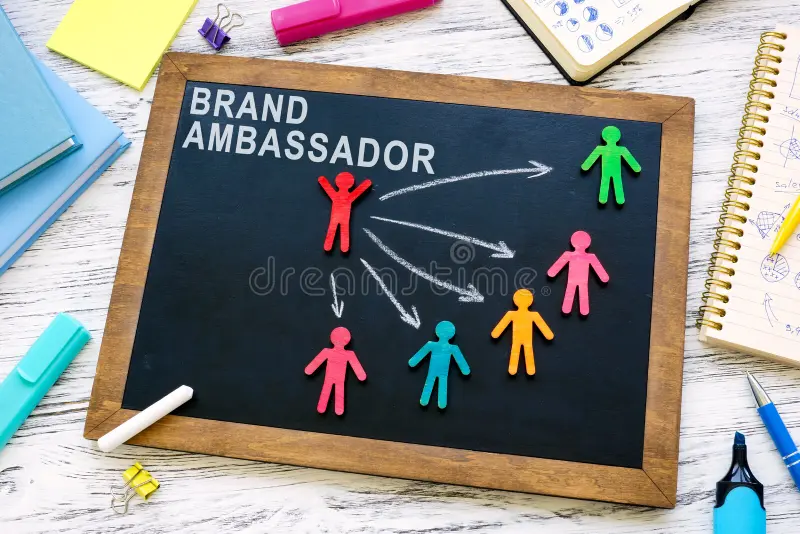
Ten Ways to Strengthen Your Brand Image and Awareness
A strong brand is more than a logo. It’s how people feel about your business. These ten proven strategies will help you boost brand awareness, build trust, and stand out in your market.
25 Aug 2025
Maintaining brand consistency across multiple creative teams is about guiding it. For CEOs and HR leads, the right processes, tools, and leadership strategies can keep everyone aligned while still producing fresh, impactful work. Here’s how.
Blog
When you’re managing multiple creative professionals, graphic designers, copywriters, videographers, each one brings their own unique style, workflow, and perspective. This diversity is a huge asset, but without a clear brand framework, it can lead to a patchwork of inconsistent visuals, messaging, and tone.
For CEOs and HR leads, brand inconsistency is a strategic one. Every disjointed colour scheme, mismatched font, or conflicting brand message chips away at your company’s credibility and recognition.
In this article, we’ll explore practical, CEO-level strategies for aligning diverse creative talent, keeping your brand message strong, and empowering your teams to work in harmony.
At first glance, brand consistency might seem like a marketing department problem. But CEOs set the tone for how brand values are understood, implemented, and respected across the organisation. Here’s why it matters at the executive level:

Your brand is the shorthand your customers use to remember you. Think of Qantas’ red kangaroo or the Commonwealth Bank’s black and yellow diamond, instantly recognisable, trusted symbols. If your creative teams deviate from your visual and verbal identity, customers may not connect all your marketing touchpoints to the same brand.
If your email campaigns have one tone, your social posts another, and your sales presentations yet another, customers might wonder which version of your company is “real.” Consistency builds trust by signalling reliability.
When you engage multiple creatives, whether in-house, through freelance marketers, or via agencies, there’s a greater risk of mixed interpretations. Without a central guide, each professional might interpret your brand differently.

While you don’t need to micro-manage font sizes or colour swatches, you do need to establish the systems and culture that make consistency possible.
Your job is to clearly communicate the “why” behind your brand identity, the values, mission, and personality that drive your business. Creatives can then translate this into visuals, words, and campaigns. Make your brand guidelines easily accessible (e.g., via a shared cloud folder or a dedicated brand portal).
Even with a clear vision, creative output can drift over time. Appoint a brand strategist or a senior creative lead who has the authority to review and approve all creative assets before they go live. If you don’t have one internally, consider hiring a marketing consultant to take on this role.
Creative professionals thrive on feedback, but only if it’s timely, constructive, and consistent. Avoid vague comments like “make it pop” and instead refer back to specific brand values and guidelines. This way, feedback reinforces the same brand principles across all creatives.
Maintaining a consistent brand across multiple creatives requires creating a brand culture that everyone can understand and apply, no matter their role or creative discipline. Below are expanded, actionable strategies CEOs can implement.
A comprehensive style guide is the foundation of brand consistency. It should:
The more visual and example-based your guide, the easier it is for creatives to get it right without guesswork.
Make it effortless for creatives to find and use approved assets:
This prevents old, off-brand versions from slipping into new campaigns.

Briefs should never be ad hoc. Create a standardised template that covers:
This uniformity ensures every creative begins with the same foundation, reducing conflicting interpretations.
Brand guidelines are useless if people forget them. Hosting quarterly or biannual brand refreshers helps:
You can even make these sessions interactive, with small creative challenges where teams rework off-brand assets into brand-compliant versions.

Even with a central brand custodian, small deviations often slip in at the department level. Assign “brand ambassadors” within marketing, sales, HR, and other teams who:
This distributed model ensures brand policing doesn’t fall solely on one person.
Provide pre-approved templates for commonly used materials:
Templates save time and reduce errors, especially for non-designers creating branded content. Canva is a great tool for this.
Facts and guidelines are valuable, but stories make brands stick. Document and share brand stories that show your values in action, customer success examples, origin stories, or campaign wins. This emotional layer helps creatives understand why certain tones, visuals, and narratives matter.

A proactive brand audit, quarterly or biannually, allows you to catch drift before it becomes a problem. Review:
This systematic review keeps the brand sharp across all channels.
Silos are brand consistency’s biggest enemy. Arrange regular cross-team check-ins between designers, copywriters, and marketing strategists. When creatives understand each other’s constraints and processes, they naturally align more closely.
Too much rigidity can stifle innovation. Make it clear where flexibility is allowed (e.g., seasonal campaigns, experimental social media content) while still protecting core brand elements. This gives creatives room to play without diluting brand identity.
It’s common for CEOs to blend in-house teams with external contractors, perhaps an internal marketing coordinator manages day-to-day content while a freelance videographer handles campaigns. This hybrid model works well, but it requires additional oversight.
If your business needs specialised visual support, hiring a dedicated professional can help. This is where a CEO might decide to hire a graphic designer, either in-house or as a contractor, to keep visuals on brand without overloading generalists.

Technology is one of your biggest allies when coordinating multiple creatives.
Platforms like Asana and Trello allow you to standardise workflows, track approvals, and ensure that all team members are working from the same priorities.
Use tools like Slack or Microsoft Teams for real-time discussion, quick asset sharing, and maintaining visibility over creative progress.
Whether it’s Google Drive, Dropbox, or a DAM, enforce version control rules so outdated or incorrect files don’t make it into production.
You can’t improve what you don’t measure. CEOs should work with marketing leaders to:
Even a simple checklist review of social posts, newsletters, and sales decks can reveal patterns of drift before they become a problem.
Brand consistency is about creating a recognisable, trustworthy identity that can adapt to new campaigns, platforms, and markets without losing its essence. For CEOs and HR leads, that means setting the vision, empowering the right people, and creating the systems that allow creative freedom within clear boundaries.
By taking the steps above, you’ll align multiple creatives and also strengthen your brand’s presence in the market, and that’s a competitive advantage worth protecting.
If you’re ready to take your visuals and brand identity to the next level, it might be time to hire a graphic designer through Cemoh, who can bring expertise, consistency, and creativity to your team.
Here are some suggested articles that are closely related to this post

A strong brand is more than a logo. It’s how people feel about your business. These ten proven strategies will help you boost brand awareness, build trust, and stand out in your market.

In an increasingly competitive marketing job market, talent alone is no longer enough. The real secret? Positioning yourself as the expert and building a brand that sells your value before you even speak.

As demand for flexible marketing talent grows, standing out as a fractional expert means clearly defining your niche, showing measurable impact, and building a strong personal brand.

Hiring exceptional marketers is more difficult than ever. This guide shows CEOs and HR leaders exactly how to attract the right talent while strengthening your brand’s marketing engine.

Marketing is not a guessing game. With the right tools and mindset, CEOs can confidently measure ROI and ensure every marketing dollar works harder than ever.

Your marketing might be working, just not well enough. If your campaigns are flatlining or your audience is tuning out, it could be time for a rethink. Here are the five telltale signs your business needs a complete marketing overhaul.